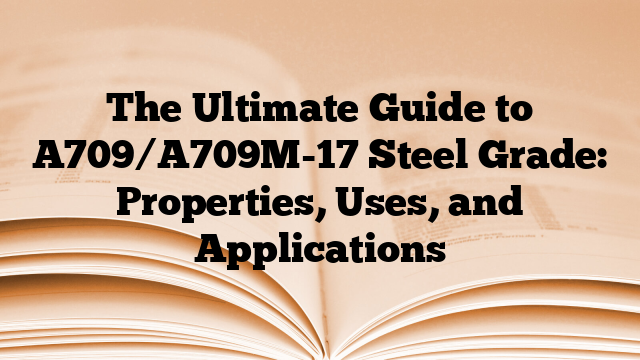The Ultimate Guide to A709/A709M-17 Steel Grade: Properties, Uses, and Applications
Chemical Composition
The chemical composition of A709/A709M-17 steel grade is as follows:
– Carbon (C): Max 0.23%
– Manganese (Mn): Max 1.35%
– Phosphorus (P): Max 0.04%
– Sulfur (S): Max 0.05%
– Silicon (Si): Max 0.15-0.40%
– Copper (Cu): Max 0.20%
– Nickel (Ni): Max 0.45%
– Chromium (Cr): Max 0.40%
– Molybdenum (Mo): Max 0.10%
– Vanadium (V): Max 0.06%
The composition above is only a general range, and the exact composition may vary depending on the manufacturer and specific grade.
Mechanical Properties
The mechanical properties of A709/A709M-17 steel grade include:
– Tensile strength: 485-620 MPa (70-90 ksi)
– Yield strength: 345 MPa (50 ksi) min
– Elongation in 8 inches: 18% min
– Elongation in 2 inches: 21% min
– Charpy V-notch toughness: 20 ft-lb (27 J) min at 4°C
These properties make A709/A709M-17 steel grade suitable for a variety of applications that require high strength, good ductility, and excellent weldability.
Standard Number
A709/A709M-17 is a standard specification for structural steel for bridges. It is published by the American Society for Testing and Materials (ASTM) and covers carbon and high-strength low-alloy structural steel shapes, plates, and bars for use in bridge construction.
Corresponding
The A709/A709M-17 steel grade corresponds to other international designations such as:
– European standard steel grade S355J2G3 or equivalent
– British standard steel grade 50B or equivalent
– Australian/New Zealand standard steel grade 300 or equivalent
These corresponding grades may have slightly different chemical compositions and mechanical properties, but they are generally comparable in terms of performance and application.

